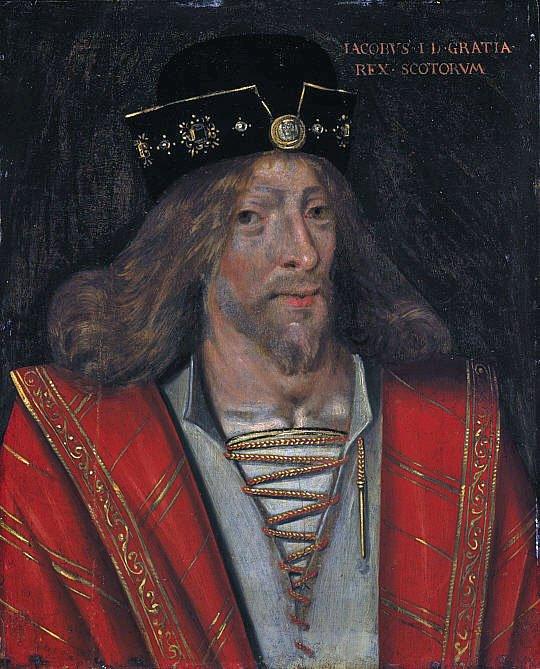Kidnap and regicide: Who was James I of Scotland?
- Published

A team of academics is hoping to find the grave of a 15th Century King of Scotland. Who was James I and why don't we know where he's buried?
James I of Scotland was a complex and colourful king.
He was a poet, a sportsman, a musician and a patron of architects.
He survived being kidnapped by pirates when he was just 12 years old - and the following 18 years he spent as a hostage to the Lancastrian kings of England.
In 1424, he made a triumphant return to Scotland and was crowned at Scone, but 13 years later he was brutally stabbed to death, his body dumped in the sewer below the Blackfriars monastery in Perth.

Young prince in danger
James Stewart was born in 1394, the third son of King Robert III and Annabella Drummond.
By the time he was eight years old, he was their only surviving son.
His brother Robert died in infancy and his other brother David, the Duke of Rothesay, died in suspicious circumstances at Falkland Castle while he was being detained by his uncle Robert, the Duke of Albany.
After David's death, James was the heir to the Scottish throne, but he was also an impediment to the royal line being transferred to the Albany Stewarts.
Fears grew for his safety and plans were made to send him to France.
In March 1406, he boarded a boat bound for France, but just days into the voyage, the vessel was intercepted in the English Channel by pirates who delivered him to Henry IV of England.

Eighteen years a hostage

On 4 April 1406, Robert III died and the 12-year-old James was now the uncrowned King of Scots. But he was imprisoned in England and his uncle, the Duke of Albany, became regent in Scotland.
James may have been a prisoner, but he was allowed to keep a small household and was treated well by Henry IV.
This lasted until 1413 when Henry IV died, his son Henry V became king, and James was transferred to the Tower of London with other Scottish prisoners.
It took another seven years before James' standing improved enough for him to be regarded more of a guest than a hostage - but it took a third change of monarch in England before James was finally allowed back to Scotland.
Henry V died in 1422, and the regency council for the infant Henry VI were eager to organise his release as soon as possible.
Despite opposition from the Albany Stewarts, it was arranged for 1424 when he arrived triumphantly in Edinburgh on Palm Sunday, accompanied by his newly-wed English wife, Joan Beaufort.

Coronation and assassination

James I was crowned King of Scotland at Scone on 21 May 1424.
Prominent members of the Albany Stewarts were found guilty of rebellion and executed, but a conspiracy against the King began to grow and he reigned for just 13 years before his death.
On 4 February 1437, the King and Queen were in their royal apartments at the Blackfriars monastery in Perth, when a group of about 30 people was let in by one of the conspirators against him.
James I was alerted and had enough time to hide in a sewer tunnel, but his exit was blocked and he was trapped and killed.
He died in a pool of his own blood, stabbed dozens of times.
The assassin, Sir Robert Graham, is said to have screamed after his death: "I have thus slayne and delivered yow of so crewel a tyrant, the grettest enemye that Scottes or Scotland might have."
James I was buried within the grounds of Perth Charterhouse, but the priory was destroyed in the reformation a century after his death and now no-one is exactly sure where his grave is.
A stone monument at the corner of Perth's King Street and Hospital Street marks the fact he is buried somewhere in the area.
Discovering the murdered King's exact location would be a major historical find - and a coup for the city of Perth.